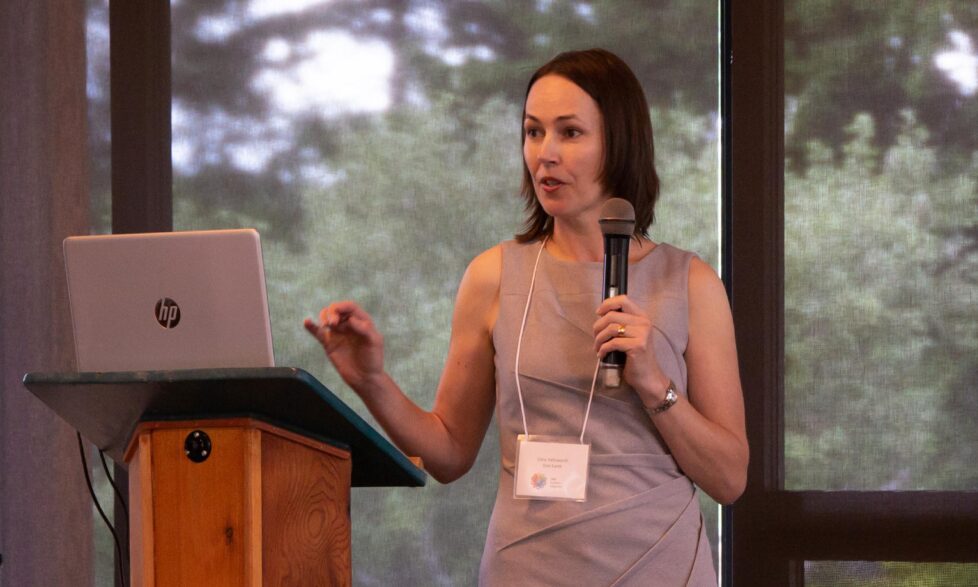One Planet Living champion – Q&A with Cora Hallsworth at One Earth
How did you hear about One Planet Living?
Through One Earth where I’m a senior associate. One Earth is a nonprofit ‘think and do’ tank based in Vancouver, Canada, which aims to transform production and consumption patterns locally, nationally and internationally. We were invited by Bioregional to be the Canadian lead for its One Planet Cities project. The project brought together four cities and city-regions across the world to create sustainability action plans – helping them move towards a greener, healthier future, where everyone enjoys a good quality of life.
And I’d been working on the ecoCity pilots project with District of Saanich.
What do you like about it?
I like the simplicity of it. The principles are very compelling and straightforward; and the graphics and icons are visually appealing. It’s great for engaging people at all levels. Nobody can disagree with wanting to achieve these ten principles.
It’s perfect for engaging people who are interested but have been put off getting engaged in sustainability planning because of onerous frameworks and reporting. One Planet Living is easier to digest than other frameworks.
Not to say that it can’t be good for people who are already engaged because it can be comprehensive as well. I think it will be important to make sure there is rigour and accountability, including metrics for those ready to dig deeper in their sustainability efforts and planning. So for those people sitting on the fence and are waiting to get nudged a little bit more, it’s great for them too.
What’s been your approach and what were some of the challenges?
We followed the One Planet Cities protocol of enlisting One Planet Living volunteer integrators and local stakeholders. Integrators are sustainability practitioners who can help create and put One Planet Action Plans into action. Local stakeholders include businesses, schools and community groups that create their own One Planet Action Plans.
There was a general call-out to our networks. And it went well – we had a target to sign up more than 20 stakeholders and we thought that was ambitious. In the end we got 12 so I think that was a good number; and we signed up 13 integrators who received training.
I think we need to provide more hands-on training and hand-holding to integrators and stakeholders during the steps of getting the plan going – and step by step guidance along the way. It is probably also prudent to have requirements/testing for integrators to pass before assigning them to stakeholders.
We found it harder to engage with bigger business. Together with Bioregional and other cities we explored opportunities to secure their participation, but I don’t think we’ve quite landed on a successful strategy. This is in part because bigger businesses are often headquartered elsewhere so local staff do not have the authority to engage in the project.
In addition, a key challenge with bigger businesses is that their staff are so busy, they don’t have time dedicated to this type of work. So next time we might be a little bit more creative on how to make it easy for them. One idea could be getting them to the commit to something specific when they sign up.
That said, we did secure the participation of a few key big businesses – Uptown, the largest mall in Saanich, and Vancity Credit Union, a major British Columbia-based financial institution.
For the stakeholders involved they’ve built more of a community among themselves. They’ve identified some neat synergies and opportunities to work together.
We also had good success with two business start-ups: BEESPOT Neigbourhoods, which is developing a passive house neighbourhood, and start-up Bumblebee Electric, which is working to accelerate widespread adoption of electric vehicles.
For both the principles aligned perfectly with their vision. That was valuable for them; they got support for their initiatives through joining the network and had confirmation they were on the right track – their vision was aligning with the One Planet Living principles.
What did you enjoy most?
I love working with schools so that’s always a highlight for me. Our group of four secondary schools and one college have been amazing to work with.
At our celebration event on 6 June, students from three of these schools shared highlights of what they are doing at their school to advance One Planet Living and about what they have learned through the project. They were inspiring, captivating and motivating. Reynolds School was a real stand-out – the teacher there, Heather Coey, developed an entire school plan around the principles. She even had students create videos to highlight what the school is doing to support One Planet Living. Videos will be available on oneplanetsaanich.org soon.
The church was amazing too. It’s a neat target audience as like schools they connect with so many different people – they extend your fingers into the community.
And with the church we’re working with, the principles gelled perfectly with their own set of principles. Even after joining quite late in the project, they jumped right in and were very excited.
What do you think was the main benefit of One Planet Cities?
For the stakeholders involved they’ve built more of a community among themselves. They’ve identified some neat synergies and opportunities to work together.
For example, one of the members from the church who also works at BC Hydro, the electrical utility company here, wants to connect with the schools because he wants to help them get their electric vehicle charging stations set up. Bumblebee Electric is also helping two of our stakeholders access low-cost electric vehicles for their organisations.
What makes One Planet Living different from other sustainability frameworks you have come across?
It’s provided a path for the organisations involved in One Planet Saanich to start digging deeper, making stronger commitments and articulating their outcomes.
People have moved further along than where they would have been without the framework. They were already interested and engaged on some level, but it’s deepened their commitment.
And it’s been helpful to track the things organisations commit to, because information about sustainability progress can get lost – during staff turnover for example. We now have this record of what they’re doing.







